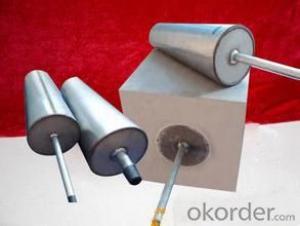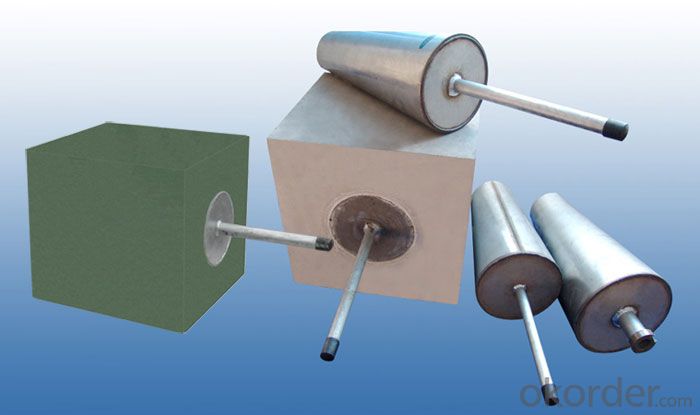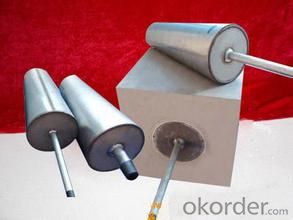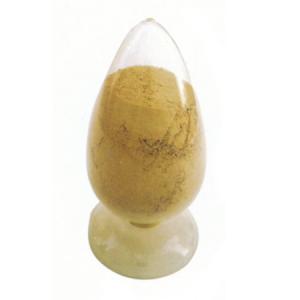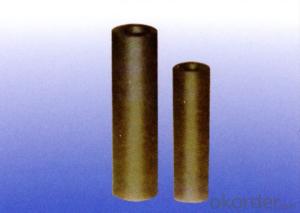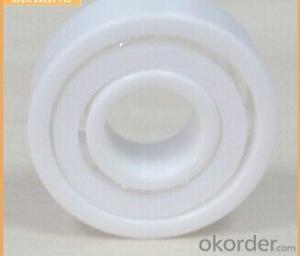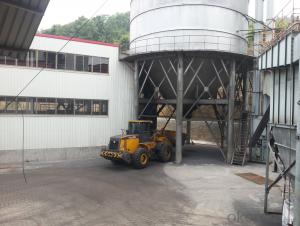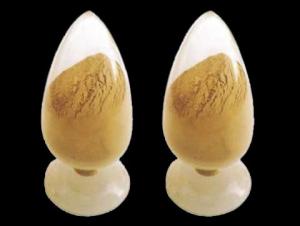Refractory Brick purging plug for Ladles
- Loading Port:
- Shanghai
- Payment Terms:
- TT OR LC
- Min Order Qty:
- 10 set
- Supply Capability:
- 50000 set/month
OKorder Service Pledge
OKorder Financial Service
You Might Also Like
High quality steel ladle purging plug for steel making
Company profile
We have many years manufacturing experience in producing all types of electric furnace refractories, ladle refractories, tundish refractories, metallurgy furnace burden refractory insulating products, industrial furnace refractories, etc,
purging plug Raw materials
Ladle permeable brick has been in the leading position in domestic and abroad over years. We have developed the series of corundum, chromium corundum, low silicon chromium corundum and corundum spinel one after another.
Customized purging plug
They can be designed and produced types of straight hole, directional slit, directional labyrinth, girth shape and interior and exterior integral split etc according to users’ request. Permeable flow rate of products can be designed upon customers’ request and can be adjusted in a wide range. The blowing opening rate is high.
purging plug Characters
Continuous casting Ladle Porous Block
High alumina and MgO content
High stability.
Thermal shock resisitance.
High life span
purging plug Physical and chemical indexes
Brand | TQZ-1 | TQZ-2 | |
Chemical composition/%,≥ | Al2O3+Cr2O3 | 92 | |
Al2O3+MgO | 92 | ||
Bulk density g/cm³ ≥ | 3 | 3 | |
Crushing strength /Mpa≥ | 1500°C×3h | 100 | 80 |
Modulus of rupture/Mpa≥ | 1500°C×3h | 20 | 15 |
Firing linear change % | 1500°C×3h | 0~+0.3 | 0~+0.4 |
Penetration gas flux (0.4Mpa)/m³ h-1 | 12~60 | 12~60 | |
Factory productivity
Based on 180,000 TON annual productivity and advanced production equipment, we have build deep cooperation relationship with Vietnam, Nigeria, Tailand, Saudi Arabia, Iran, Turkey, etc.
- Q: How do monolithic refractories withstand the chemical attacks in copper smelting applications?
- Due to their unique properties and composition, monolithic refractories are capable of enduring chemical attacks in copper smelting applications. These refractories are specifically engineered to resist the harsh and corrosive environment found in copper smelting processes. To begin with, monolithic refractories are crafted from high-quality materials such as alumina, silica, and magnesia. These materials possess high melting points and chemical stability. Carefully selected, they are able to withstand the corrosive effects of copper smelting, including the presence of sulfur compounds and acidic gases. The refractory's composition also includes various additives and bonding agents that enhance its resistance to chemical attacks. In addition, monolithic refractories exhibit exceptional thermal shock resistance. This means they can withstand rapid temperature changes without cracking or spalling. In copper smelting applications, where extreme temperatures are involved, this refractory quality is crucial in preventing the formation of cracks and ensuring long-term performance. Furthermore, monolithic refractories possess a dense and compact structure. This structure serves as an effective barrier against the infiltration of molten copper and other corrosive substances. By preventing the penetration of chemical attacks, the refractory lining's durability and longevity are ensured. Moreover, monolithic refractories offer superior erosion resistance. This is particularly important in copper smelting applications, where high-velocity gases and flows of molten metal can cause erosion of the refractory lining. The refractory's erosion resistance prevents the degradation of the lining and maintains its structural integrity. In conclusion, monolithic refractories are specially designed to withstand the chemical attacks encountered in copper smelting applications. Through the use of high-quality materials, the incorporation of additives, and the possession of excellent thermal shock resistance, density, and erosion resistance, these refractories provide a reliable and durable lining that can endure the harsh conditions of copper smelting processes.
- Q: How do monolithic refractories improve the lining of converters and refining vessels?
- Improving the lining of converters and refining vessels is a crucial role played by monolithic refractories in several ways. To begin with, these refractories offer exceptional thermal insulation properties, which effectively maintain the desired temperature within the converters and refining vessels. This is particularly important as the metallurgical processes require high temperatures to be effective. Furthermore, the high chemical resistance of monolithic refractories is vital in the harsh conditions of converters and refining vessels. These vessels often come into contact with corrosive materials and aggressive slags, but the monolithic refractories prevent any deterioration or erosion of the lining caused by these substances. In addition, the mechanical strength and stability provided by monolithic refractories ensure that the lining remains intact even under high operational stresses. This is especially significant in converters and refining vessels where frequent mechanical movements and thermal expansions occur. Moreover, monolithic refractories offer easy installation and repair compared to traditional bricks, which require complex and time-consuming assembling. Monolithic refractories can be applied as a single mass, minimizing downtime during installation or repair. This results in time and cost savings for maintaining the lining of converters and refining vessels. Overall, the utilization of monolithic refractories significantly enhances the performance and longevity of converters and refining vessels. Their excellent thermal insulation, chemical resistance, mechanical strength, and ease of installation and repair guarantee efficient and reliable operation in metallurgical processes.
- Q: How do monolithic refractories impact the quality and performance of iron and steel products?
- Monolithic refractories play a crucial role in ensuring the quality and performance of iron and steel products. These refractories are specifically designed to withstand extremely high temperatures and harsh conditions, making them an essential component in various applications within the iron and steel industry. Firstly, monolithic refractories contribute to the overall quality of iron and steel products by providing excellent thermal insulation. They help to maintain a consistent and controlled temperature environment in the manufacturing process. This is particularly important in blast furnaces, where temperatures can reach up to 2,000 degrees Celsius. By effectively insulating the furnace walls, monolithic refractories help to minimize heat loss and ensure efficient energy utilization. This ultimately leads to higher-quality products with improved mechanical properties. Secondly, monolithic refractories offer superior resistance to chemical and physical wear. In the steelmaking process, molten metal and slag can be highly corrosive, causing erosion and degradation of the refractory lining. Monolithic refractories are specifically engineered to withstand these aggressive environments, providing excellent resistance to chemical attack and mechanical stress. By maintaining the integrity of the lining, they prevent contamination and prolong the lifespan of the furnace or ladle, ultimately enhancing the quality of the final iron and steel products. Furthermore, monolithic refractories enable greater design flexibility and ease of installation. Unlike traditional refractory bricks, which require meticulous placement and fitting, monolithic refractories can be applied as a single, cohesive material. This allows for more complex shapes and structures, resulting in optimized furnace design and improved thermal efficiency. Additionally, the ease of installation reduces downtime during maintenance and repairs, ensuring continuous production and minimizing disruptions to the production process. Overall, monolithic refractories significantly impact the quality and performance of iron and steel products. They provide excellent thermal insulation, resist chemical and physical wear, and offer greater design flexibility. By ensuring consistent and controlled temperature environments, preventing contamination, and enabling efficient production processes, monolithic refractories contribute to the production of high-quality iron and steel products that meet the stringent requirements of various industries.
- Q: What are the advancements in monolithic refractory technology for the iron and steel industry?
- There have been significant advancements in monolithic refractory technology for the iron and steel industry in recent years. Monolithic refractories are a type of heat-resistant material used to line the walls and floors of high-temperature industrial processes, such as those involved in iron and steel production. One of the key advancements in monolithic refractory technology is the development of new and improved materials. Traditional refractory materials, such as firebricks, have been replaced by more advanced materials like castables and gunning mixes. These new materials offer superior performance in terms of thermal conductivity, thermal shock resistance, and erosion resistance. They can withstand higher temperatures and can be applied more efficiently, resulting in improved process efficiency and reduced downtime for maintenance. Another important advancement is the use of advanced additives in monolithic refractories. These additives can enhance the properties of the refractory material, such as increasing its resistance to corrosion and erosion. They can also improve the bond between the refractory and the substrate, ensuring a longer lifespan for the lining. Furthermore, advancements in monolithic refractory technology have led to the development of innovative installation techniques. For instance, shotcreting, a process that involves spraying the refractory material onto the surface, has gained popularity due to its efficiency and ability to provide a uniform lining. Similarly, the use of gunning machines, which pump the refractory material at high velocity, has improved the speed and accuracy of installation. Moreover, there have been advancements in the design of monolithic refractories specifically tailored for different applications in the iron and steel industry. Refractories for blast furnaces, ladles, tundishes, and other critical equipment have been optimized to withstand the unique challenges and harsh conditions of these processes. The development of specialized monolithic refractories has resulted in increased productivity, reduced energy consumption, and improved product quality in the iron and steel industry. In conclusion, advancements in monolithic refractory technology for the iron and steel industry have brought about improved materials, advanced additives, innovative installation techniques, and specialized designs. These advancements have significantly enhanced the performance, durability, and efficiency of refractory linings in high-temperature industrial processes. As a result, the iron and steel industry can benefit from increased productivity, reduced downtime, and improved product quality.
- Q: How do monolithic refractories resist chemical attacks from molten metals and slag?
- Monolithic refractories are engineered to withstand chemical attacks caused by molten metals and slag. They possess various essential qualities that enable them to endure such harsh conditions. To begin with, monolithic refractories comprise top-notch materials with exceptional chemical resistance. These materials, including alumina, magnesia, and chrome, have a high melting point and remain stable even when exposed to extreme temperatures and corrosive substances. This chemical stability ensures that the refractory maintains its integrity and structural strength when in contact with molten metals and slag. Moreover, monolithic refractories have a compact and dense structure. This microstructure serves as a barrier, preventing molten metals and slag from penetrating the refractory material. By limiting the contact between the corrosive substances and the refractory, the dense structure reduces the likelihood of chemical reactions and erosion, thereby enhancing the refractory's resistance to chemical attacks. Additionally, monolithic refractories often contain additives and binders that enhance their chemical resistance. These additives form a protective layer on the refractory surface, acting as a shield against chemical attacks. They can also react with certain corrosive substances, forming stable compounds that further inhibit the penetration and corrosion of the refractory material. Furthermore, monolithic refractories are designed to have minimal porosity. This low porosity minimizes the absorption of molten metals and slag, preventing them from infiltrating the refractory and causing damage. By reducing the permeability of the material, the refractory can maintain its structural integrity and resist chemical attacks for extended periods. In conclusion, monolithic refractories withstand chemical attacks from molten metals and slag due to their high-quality materials, dense structure, additives, and low porosity. These combined properties enable the refractories to endure aggressive environments and maintain their performance and longevity in industrial applications.
- Q: What are the common testing methods used to evaluate the performance of monolithic refractories?
- To evaluate the performance of monolithic refractories, various commonly used testing methods are employed. These methods aid in determining the durability and suitability of refractory materials for different applications. Some of the frequently utilized testing methods include: 1. Thermal Conductivity Testing: This method gauges the heat conductivity of a refractory material. It assists in assessing the insulation properties and resistance to thermal shocks. 2. Compression Testing: This test measures the compressive strength of the refractory material. It provides insights into its ability to withstand external forces and pressure without fracturing or deforming. 3. Abrasion Testing: This method assesses the refractory material's resistance against wear and tear caused by abrasive forces. It helps evaluate its ability to endure erosive conditions and prolonged exposure to harsh environments. 4. Creep Testing: By measuring the deformation or sagging of the refractory material under high temperatures and constant loading, this testing method assesses its resistance to deformation and ability to maintain shape over time. 5. Thermal Expansion Testing: This test determines the expansion and contraction characteristics of the refractory material when exposed to different temperatures. It aids in evaluating its ability to withstand thermal cycling without cracking or fracturing. 6. Chemical Resistance Testing: This method evaluates the refractory material's resistance to chemical attacks, such as corrosion or erosion resulting from chemical reactions. It assists in determining its suitability for applications involving contact with corrosive substances. 7. Refractoriness Under Load (RUL) Testing: This test measures the refractory material's ability to withstand high temperatures while maintaining structural integrity. It aids in assessing its resistance to thermal stresses and suitability for high-temperature applications. These testing methods provide valuable data for evaluating the performance of monolithic refractories and ensuring their appropriateness for specific industrial applications. By considering these properties, manufacturers and users can make well-informed decisions regarding the selection and usage of refractory materials.
- Q: What are monolithic refractories and how are they different from other refractory materials?
- Monolithic refractories, unlike bricks or tiles, are refractory materials that are not pre-formed into specific shapes or sizes. Instead, they are composed of a mixture of aggregates, binders, and additives, which are then installed and cured to create a solid and dense structure. One notable difference between monolithic refractories and other refractory materials is their versatility and ease of installation. While traditional bricks or tiles require skilled labor and careful assembly, monolithic refractories can be poured, sprayed, or gunned into place, allowing for a faster and more efficient installation process. This makes them particularly suitable for complex shapes or hard-to-reach areas. Another distinction lies in the physical properties of monolithic refractories. Unlike bricks and tiles, which are known for their mechanical strength and resistance to thermal shock, monolithic refractories can be customized to exhibit a wide range of properties. Depending on the specific application requirements, they can be engineered to have excellent thermal insulation, superior corrosion resistance, or enhanced abrasion resistance. This adaptability makes monolithic refractories suitable for various industries, including steel, cement, glass, and petrochemical. Furthermore, monolithic refractories have the advantage of being able to expand and contract with temperature changes, unlike rigid brick structures. This thermal flexibility helps prevent cracking and damage caused by thermal cycling, thus prolonging the lifespan of the refractory lining. Additionally, monolithic refractories offer better refractory integrity and reduced joint failure since they do not have seams or weak points that are susceptible to thermal stresses. In conclusion, monolithic refractories are a versatile and convenient type of refractory material that can be tailored to meet specific application requirements. Their easy installation, thermal flexibility, and customizable properties distinguish them from other refractory materials like bricks or tiles.
- Q: What are the key properties of patching mixes used for monolithic refractory repairs?
- The key properties of patching mixes used for monolithic refractory repairs include high thermal conductivity, excellent adhesion, good workability, high strength, resistance to thermal shock, and suitable setting and drying times. These properties ensure effective repairs and long-lasting performance in high-temperature applications.
- Q: How do monolithic refractories contribute to the safety of iron and steel plants?
- The safety of iron and steel plants heavily relies on monolithic refractories. These refractories are specifically designed to withstand the harsh conditions commonly encountered in these industrial settings, including high temperatures, chemical attacks, and mechanical stresses. By using monolithic refractories, iron and steel plants can enjoy the following benefits: 1. Thermal resistance: Monolithic refractories excel in resisting extreme temperatures, preventing heat loss and ensuring the efficient operation of equipment and systems. This thermal insulation contributes to plant safety by reducing the risk of overheating, which can lead to equipment failure or catastrophic accidents. 2. Chemical resistance: Iron and steel plants involve the use of various chemicals, such as molten metal, slag, and corrosive gases. Monolithic refractories exhibit high resistance to these aggressive chemical environments, preventing corrosion, erosion, and material degradation. This resistance ensures the integrity of refractory linings, reducing the risk of leaks, spills, and contamination that could endanger workers and the environment. 3. Structural stability: Monolithic refractories provide excellent mechanical strength, offering stability to furnace linings, ladles, and other equipment. This stability is crucial for the safe operation of iron and steel plants, minimizing the risk of structural failure, collapse, or damage caused by mechanical stresses or heavy loads. 4. Quick repair and maintenance: Monolithic refractories offer easy installation and repair compared to traditional brick refractories. They can be poured, gunned, or rammed in place, allowing for swift repairs and maintenance. This rapid response to refractory failures or damages contributes to plant safety by minimizing downtime and preventing potential hazards associated with equipment malfunction. 5. Flexibility and adaptability: Monolithic refractories can be tailored to meet the specific needs of iron and steel plants. They can be customized in terms of composition, density, thermal conductivity, and other properties, ensuring optimal performance under varying operating conditions. This adaptability ensures that refractory linings are well-suited for the plant's processes, reducing the likelihood of accidents caused by inadequate refractory materials. In conclusion, monolithic refractories enhance the safety of iron and steel plants by providing thermal resistance, chemical resistance, structural stability, rapid repair capabilities, and flexibility. By utilizing these refractories, iron and steel plants can maintain a safe working environment, minimize the risk of accidents, and ensure the reliable operation of their equipment and systems.
- Q: What are the typical properties of monolithic refractories used in iron and steel industry?
- Monolithic refractories used in the iron and steel industry typically possess high thermal conductivity, excellent resistance to thermal shock, and high mechanical strength. They are also known for their ability to withstand high temperatures and harsh chemical environments. Additionally, these refractories exhibit good erosion and abrasion resistance, low porosity, and high density, making them ideal for lining furnaces, ladles, and other equipment in the iron and steel production process.
Send your message to us
Refractory Brick purging plug for Ladles
- Loading Port:
- Shanghai
- Payment Terms:
- TT OR LC
- Min Order Qty:
- 10 set
- Supply Capability:
- 50000 set/month
OKorder Service Pledge
OKorder Financial Service
Similar products
Hot products
Hot Searches
Related keywords

